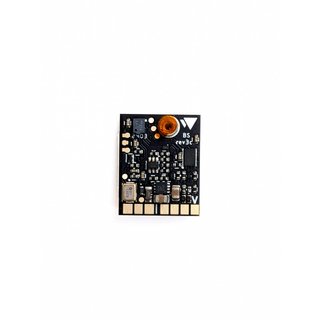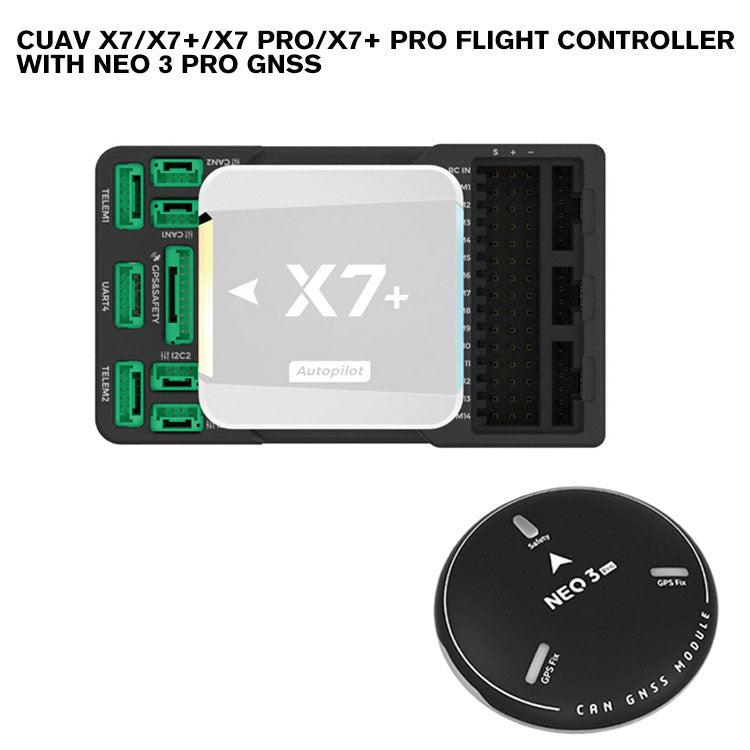SparkNavi Drone Flight Controller and GNSS/INS Made in Taiwan: Precision and Innovation
SparkNavi Drone Flight Controller and GNSS/INS Made in Taiwan: Precision and Innovation
Blog Article
Exploring the Function of Drone Flight Controllers in Enhancing Trip Security and Navigating Efficiency
The innovation of drone technology has actually dramatically increased the relevance of flight controllers, which serve as the mind of these airborne automobiles. By incorporating real-time data from a selection of sensing units, trip controllers improve flight stability and navigation efficiency, guaranteeing that drones can run efficiently even in complex settings.

Recognizing Flight Controllers
Trip controllers are indispensable parts in the performance of drones, serving as the brains that manage and support trip procedures. These advanced devices process information from various sensing units, including accelerometers, gyroscopes, and GPS, to make certain that the drone preserves its intended flight path. The flight controller translates this data and performs commands based upon pre-defined algorithms, allowing the drone to respond to environmental adjustments, such as wind or barriers.
The main function of a trip controller is to preserve stability during trip. It attains this by making real-time modifications to the drone's electric motors and control surfaces, guaranteeing equilibrium and control. Additionally, modern-day flight controllers incorporate sophisticated features such as waypoint navigation, enabling for automated trip courses and boosted functional performance.
Comprehending the style of flight controllers is essential for both enthusiasts and experts. They usually include a microcontroller, firmware, and different user interfaces for sensing unit input and communication. As innovation developments, flight controllers have become more small and qualified, incorporating expert system to adapt and enhance decision-making procedures to complex flight scenarios. This development signifies a pivotal development in the drone sector, leading the way for more advanced applications and more secure procedures.
Trick Parts of Flight Stability
Attaining ideal flight security in drones counts on numerous crucial elements that operate in show to ensure smooth and controlled operations. Central to this security is the flight controller itself, which refines information from various sensing units to keep the wanted flight mindset. This includes accelerometers and gyroscopes that gauge movement and orientation, permitting for real-time adjustments to the drone's position.
An additional important element is the digital rate controllers (ESCs), which regulate the power delivered to the electric motors. By finely adjusting motor speeds in feedback to flight controller commands, ESCs aid preserve balance and neutralize disruptions brought on by wind or unexpected motions.
Furthermore, the layout of the drone's structure plays a pivotal duty in flight security. A well-structured structure reduces resonances and boosts the overall wind resistant profile, adding to smoother trip characteristics. The assimilation of innovative algorithms within the flight controller aids in predictive adjustments, guaranteeing a adaptable and responsive flight experience.
Together, these parts form a natural system that boosts a drone's security, permitting specific handling and improved efficiency in numerous flight problems.
Navigating Efficiency Methods
Efficiency in navigating is necessary for optimizing drone operations, particularly in complex atmospheres. Efficient navigating strategies boost the capability of drones to go across tough surfaces and stay clear of obstacles, therefore enhancing functional effectiveness and security.
One noticeable technique is the execution of innovative general practitioners and inertial measurement devices (IMUs) that give exact location monitoring and orientation data. These modern technologies enable drones to calculate optimum trip paths in real-time, taking into consideration various aspects such as wind problems and possible challenges.
Another see this page method involves the usage of formulas for path preparation and optimization. Algorithms such as A * and Dijkstra's algorithm can be released to identify the most reliable path while decreasing energy usage and flight time. Integrating device understanding designs can enable drones to adaptively learn from their settings, improving navigation abilities via experience.

Influence On Autonomous Drones
The integration of innovative navigating strategies has exceptionally transformed the abilities of self-governing drones, allowing them to operate with better freedom and accuracy. SparkNavi drone flight controller and GNSS/INS made in taiwan. These improvements are mainly credited to advanced flight controllers that utilize real-time information handling and sensing unit blend, permitting drones to navigate complex environments seamlessly
The effect on independent drones extends beyond simple navigation; it encompasses enhanced barrier avoidance, boosted security throughout vibrant conditions, and raised mission dependability. By leveraging algorithms that include equipment learning and expert system, drones can adjust to changing situations, making educated choices that enhance their flight courses while lessening risks.
Furthermore, the execution of durable flight controllers has actually facilitated the implementation of intricate jobs, such as aerial assessments, delivery services, and farming monitoring, with very little human intervention. This capability not just streamlines procedures but also lowers human error, consequently improving total safety.
Consequently, the operational range of autonomous drones has actually expanded dramatically, making them vital tools in different sectors. Their capability to perform efficiently in diverse situations highlights the essential role that advanced trip controllers play in shaping the future of unmanned airborne systems.
Future Trends in Flight Control
Regularly, innovations in flight control technology are positioned to redefine the landscape of drone procedures in the coming years. Emerging fads indicate a substantial change towards improved expert system (AI) combination, making it possible for trip controllers visite site to refine real-time information more effectively. This advancement will promote improved decision-making abilities, permitting drones to adjust to vibrant environmental conditions autonomously.
In addition, the application of equipment learning algorithms is expected to boost predictive maintenance, thereby lessening downtime and expanding the lifecycle of drone parts. This aggressive technique to upkeep will certainly be important as drone applications broaden across different markets, from agriculture to logistics.

.jpg)
Last but not least, advancements in secure communication protocols will deal with safety and regulative issues, making sure that drones can run perfectly in overloaded airspaces (SparkNavi drone flight controller and GNSS/INS made in taiwan). Collectively, these trends aim in the direction of a future where trip control systems are not just smarter and a lot more likewise capable however reliable of running securely in a progressively integrated airspace
Conclusion
In final thought, drone flight controllers are integral to improving trip security and navigating effectiveness via the advanced handling of sensor information. By keeping optimum trip perspectives and employing sophisticated formulas for course optimization and obstacle avoidance, these controllers substantially add to the autonomy and operational security of drones. As innovation continues to progress, better developments in flight control systems are expected, guaranteeing improved performance and expanded abilities in the realm of unmanned airborne lorries.
By integrating real-time data from a range of sensors, flight controllers boost trip security and navigating performance, ensuring that drones can run efficiently even in complex settings.Trip controllers are integral elements in the performance of drones, offering as the helpful hints minds that stabilize and take care of flight procedures. Additionally, modern trip controllers integrate sophisticated functions such as waypoint navigation, enabling for automated flight courses and improved operational efficiency.
Central to this security is the flight controller itself, which processes data from various sensing units to maintain the wanted trip perspective.In verdict, drone flight controllers are integral to boosting trip stability and navigation performance with the advanced handling of sensor data.
Report this page